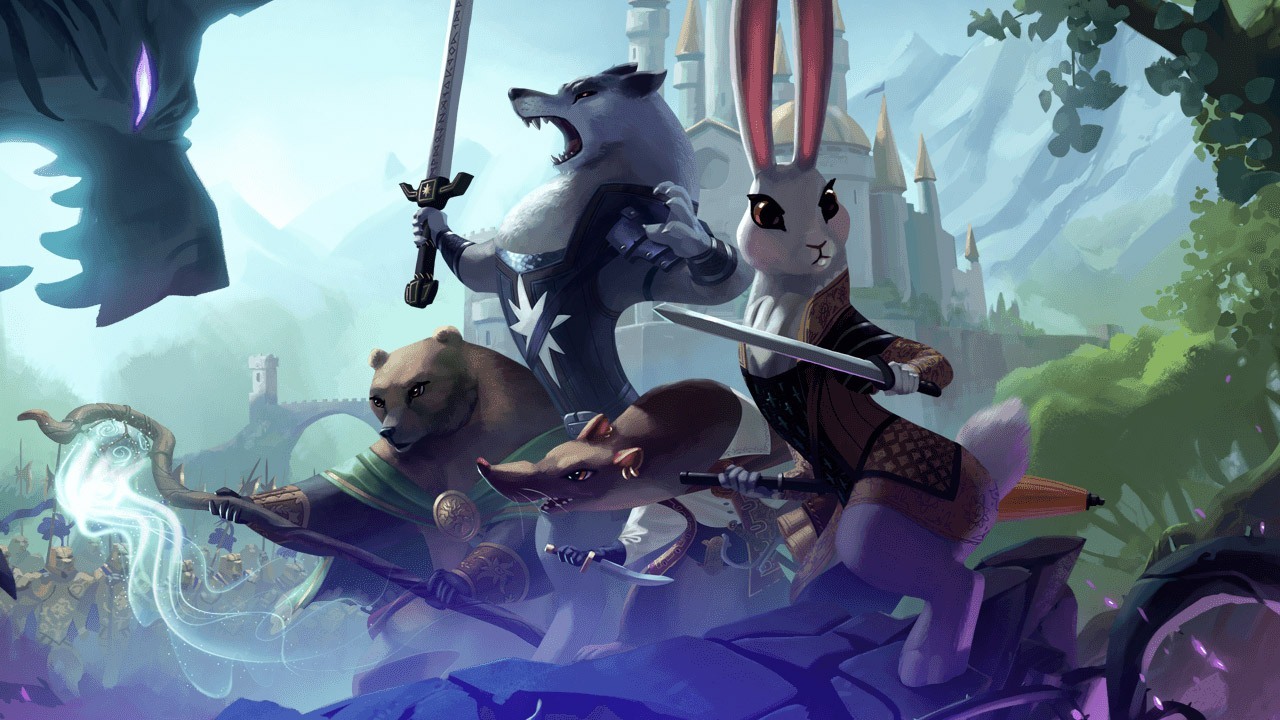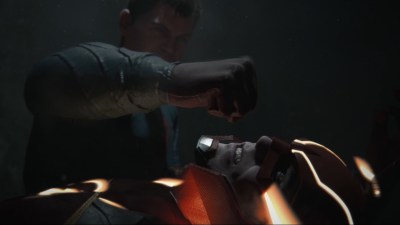Armello is a game that starts with great promise. The intro that plays every time you boot it up is beautiful, and gives a sense of the foreboding danger that lies ahead.
But how well does the game fare? Well, that’s a little more complicated. The short answer: pretty well at first, but you’ll likely face some minor (and a few major) hiccups along the way. For the long answer, read on.
Armello is a turn-based role-playing strategy board game from indie developer League of Geeks. The game takes place in the mythical kingdom of Armello, where anthropomorphic animals make up various clans under the rule of a once benevolent King. However, the King is slowly succumbing to a dark force known as the Rot, which causes him to become irrational as he descends into madness and eventually death. Representatives of various clans decide to seize the chance to dethrone the King and become the new ruler of Armello. Think Game of Thrones, only with woodland critters instead of incestuous siblings.
Gameplay is pretty straightforward at first, but it becomes increasingly complex as you progress through the tutorials. Before you know it, you’ll find yourself needing to consider a whole host of different mechanics and information at the beginning of each round, meaning that games can stretch on for upwards of an hour or more, much of it spent procrastinating. Each game session consists of four players (human or AI) who choose from one of eight characters to play as. Each has different stats and a unique ability that can lend them an edge in combat, diplomacy or other areas.
The main objective is to overthrow the king of Armello and become the new ruler of the land, and you have a number of ways to claim victory. One way is to accumulate as many Prestige points as possible by completing quests or killing other players and NPCs. Once the King succumbs to the rot and dies, the player with the most amount of Prestige points wins the game. You can also confront and defeat the King in combat, gather four spirit stones which let you heal him, or accumulate more Rot points than the King and defeat him that way.
Every quest you complete on the board increases one of your stats, and you can either play it safe or try your luck and reap more rewards. If you take a chance and lose, you’ll still get a stat increase - but will lose health or a valuable asset by way of punishment.
Dice rolls play a large role when it comes to engaging in combat with other players or NPCs, or avoiding traps. Though there’s a fair amount of chance involved with these interactions, your character’s
stats affect the number of dice you get to roll, increasing your odds of success. It’s a relatively straightforward numbers game - the highest score wins - but with any number of cards and other effects in play, and a number of different stats to take into account, there’s actually more tactical depth than you might initially think.
If at any point your character dies, they respawn back at their starting point. While this may sound lenient, a strict turn limit to each game means that you can lose a good two or three turns simply to get back to where you need to be - time that opponents can use to get a comfortable lead.
At the beginning of your turn, you draw a certain number of cards. These include items you can equip to give you advantages in combat, spells which temporarily boost your stats, and traps that you can set on the map or put directly on players, to name but a few.
Cards are probably one of the best features of Armello. Where to lay your traps, what items or companions you wish to equip, and hindering your opponent are all essential to your survival, and a good range of cards means that you never feel short of options.
For the most part the mechanics work well together, but there’s some questionable balancing. Some methods of winning are more difficult than others, meaning you’ll rarely pursue them unless you’re pushed to do so.
The Prestige route is usually the easiest way to win. You can get prestige points in so many ways it’s tempting to just horde a lot of them and wait for the King to die, whereas the various other victory conditions often involve a lot of forward planning and can often be closed off to you halfway through a game, meaning you end up essentially playing a game that you have no hope of winning.
Not that the AI is particularly challenging, mind; the single-player mode falls down thanks to dumb computer-controlled opponents who fail to pose much of a threat and have a habit of making stupid decisions or overlooking obvious opportunities to gain an advantage.
There’s no way to increase or decrease the AI’s difficulty, either, meaning that playing solo often feels like playing Chess against a toddler. Sure, you’re able to prove your superiority - but it doesn’t really mean much when your opponent has just stuck a pawn up their nose. Thankfully, playing online helps you get the most of the game. Other humans of course provide more of a challenge, and play more tactically.
As with any turn-based game, you still have to wait for the other players to make their move before you can make your own. Waiting for AI players can be tedious, but it’s worse when human players spend forever before finalizing their turn. You can plan your next move or even play certain cards while you wait, but a lot of time is spent just twiddling your thumbs - and it’s not made any easier by a lack of in-game chat options.
If you haven’t noticed already from the screenshots on this page, Armello looks gorgeous; the setting and character designs are easily the game’s strongest asset. Characters ooze personality, the world is richly detailed and the artwork featured on the many action cards is up there with the best.
The music also captures the darker tone and epic scale of the game’s plot very effectively, and the dialogue and sound effects, while used sparingly, help to keep things sounding lively. Armello’s presentation is by far one of its strongest aspects. The game may have been developed on what is a pretty modest budget, but you certainly wouldn’t know it from the production values on display.
The dark story of Armello perfectly contrasts with the cutesy look of the anthropomorphic animals, and is another plus. What could have come off as absurd or twee in the wrong hands is instead handled with a such care that you soon forget the drama underpinning the game is performed by a bunch of woodland critters.
A fun but flawed experience, Armello will likely divide as many players as it delights. Some aspects are extremely well designed, while others are lackluster. You will however get enough enjoyment out of it to play for a while, and the inclusion of online multiplayer (no local multiplayer, unfortunately) means that it may well be something you find yourself dipping back into from time to time. With DLC and added features hopefully coming up in the near future, Armello could turn into something truly special; as it stands however, it’s a game with plenty of promise and gorgeous production values, but a few frustrating flaws that may put off less patient players.


